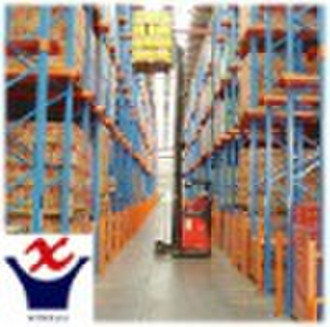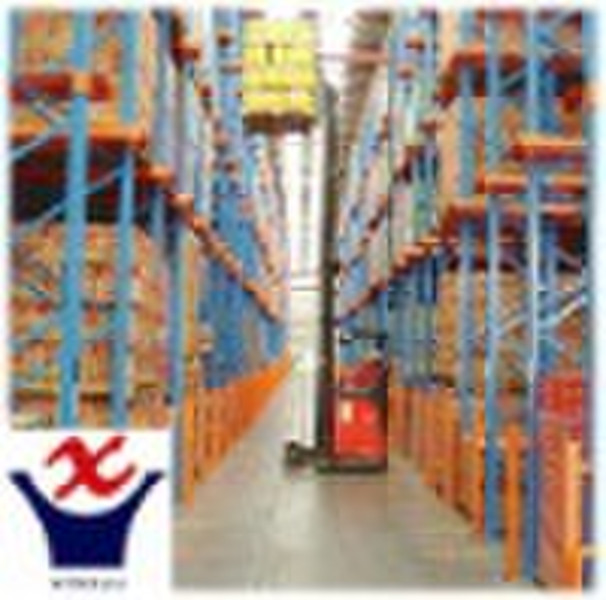Catalog
-
Catalog
- Agriculture
- Apparel
- Automobiles & Motorcycles
- Beauty & Personal Care
- Business Services
- Chemicals
- Construction & Real Estate
- Consumer Electronics
- Electrical Equipment & Supplies
- Electronic Components & Supplies
- Energy
- Environment
- Excess Inventory
- Fashion Accessories
- Food & Beverage
- Furniture
- Gifts & Crafts
- Hardware
- Health & Medical
- Home & Garden
- Home Appliances
- Lights & Lighting
- Luggage, Bags & Cases
- Machinery, Hardware & Tools
- Measurement & Analysis Instruments
- Mechanical Parts & Fabrication Services
- Minerals & Metallurgy
- Office & School Supplies
- Packaging & Printing
- Rubber & Plastics
- Security & Protection
- Service Equipment
- Shoes & Accessories
- Sports & Entertainment
- Telecommunications
- Textiles & Leather Products
- Timepieces, Jewelry, Eyewear
- Tools
- Toys & Hobbies
- Transportation
Filters
Search
supplying high quality of pallet racking and stora
original price: 60,00 USD
Weifang, China
Production capacity:
5000 Set / Month

Nancy Liu
Contact person
Basic Information
| Place of Origin | Shandong China (Mainland) |
|---|---|
| Brand Name | XIAOYU |
| Model Number | XY-08 |
Load beams (also called step beams or box beams). Most Step Beams are roll formed members with a 1 step along the top inside edge. This step is used to hold any load support components such as pallet supports or wire decks. Box Beams have no inset step, instead have four flat sides like a box. All load beams typically mount onto an upright frame column with integral rivets or hooks. Some systems utilize an extra clip or bolt to lock the beam to the upright. Structural Beams are hot formed structural C shapes with connecting clips at either end. Structural load beams are generally used with structural uprights but can be used with standard roll formed uprights. Structural load beams offer heavier weight capacities than step beams or box beams. Upright Frames (also called upright columns or uprights) vary in size and design depending on load requirements, and styles. The most common upright column is produced by roll forming flat coil stock steel into a modified "C" shape with returns. This style is often referred to as open-back roll-formed columns. Holes or slots are punched during manufacturing up and down the column at standard intervals so that the load beams can be mounted into the upright columns. Upright frames can also be constructed utilizing structural C shapes for columns. Structural uprights have an increased weight capacity over roll formed uprights. Diagonal Braces and Horizontal Braces, commonly referred to as upright frame lacing is usually welded between two upright columns to form selective upright frames. The lacing may be bolted to the columns in some cases. Pallet Supports are roll formed channels that are placed front to back between the load beams to support pallets. Wire Decking is commonly used as a safety measure on selective pallet rack to prevent pallets or the products stored on them from falling through the rack structure. Wire mesh decking comes in various thicknesses and mesh dimensions. Wire mesh construction also allows for easy identification of shelf contents and prevents dirt and other debris from accumulating on the shelves because of the holes in the mesh. Most wire mesh decking has U-shaped channel supports, also known as struts, to support the load. With this waterfall decking, the wire mesh extends across the top and down the front of the beam to provide more support, and is more desirable in the marketplace. Reverse waterfall decking can provide containment of a loose product to prevent the product from falling behind the rack system. Lay-in decking rests inside the step of the beam, and wire mesh does not waterfall over the beam. Some types of decking are manufactured with solid metal instead of wire mesh. Even though the solid decking provides a greater distributed weight capacity, it is discouraged by fire inspectors because sprinkler systems cannot spray through the shelves to levels below. Footplates, also known as footpads or baseplates, are at the base of columns and serve as anchors to give the rack more stability: anchor bolts are inserted through the baseplates holes to attach the column to the concrete floor. Footplates are made of thicker steel and in some geographic locations, they must be of a certain size and seismic rating. Footpads increase the pallet racks overall stability and weight-bearing capacity. Shims are used when the uprights are resting on uneven floors; the shims, equal in size to the base of the uprights, are installed beneath the uprights to level the rack. Row spacers are sometimes used if uprights are arranged in back-to-back rows; the spacers are mounted between adjacent columns to ensure that the rows are kept straight and to give the pallet racks even more strength and steadiness. Wall ties may be used for further support if the uprights are arranged in a row along a wall. Column protectors, also known as post protectors, are protective shields that can be installed around the base of an upright to minimize damage where forklifts might hit the upright. Damage to the base of a column can weaken the entire frame and could cause it to collapse. Column protectors are made of various materials such as polyethylene, ductile iron casting, and other durable materials. Guard rails are installed to increase protection for upright columns and for human safety when platforms or steps are attached to pallet racks. Common components of selective rack include the following: Load beams (also called step beams or box beams). Most Step Beams are roll formed members with a 1 step along the top inside edge. This step is used to hold any load support components such as pallet supports or wire decks. Box Beams have no inset step, instead have four flat sides like a box. All load beams typically mount onto an upright frame column with integral rivets or hooks. Some systems utilize an extra clip or bolt to lock the beam to the upright. Structural Beams are hot formed structural C shapes with connecting clips at either end. Structural load beams are generally used with structural uprights but can be used with standard roll formed uprights. Structural load beams offer heavier weight capacities than step beams or box beams. Upright Frames (also called upright columns or uprights) vary in size and design depending on load requirements, and styles. The most common upright column is produced by roll forming flat coil stock steel into a modified "C" shape with returns. This style is often referred to as open-back roll-formed columns. Holes or slots are punched during manufacturing up and down the column at standard intervals so that the load beams can be mounted into the upright columns. Upright frames can also be constructed utilizing structural C shapes for columns. Structural uprights have an increased weight capacity over roll formed uprights. Diagonal Braces and Horizontal Braces, commonly referred to as upright frame lacing is usually welded between two upright columns to form selective upright frames. The lacing may be bolted to the columns in some cases.
Delivery terms and packaging
Packaging Detail: 1, Something environmental wrapping for exporting2, According to the performance of the goods and customer requirements.3, Carton, PP film or foam Delivery Detail: 20 working days after 30% deposit or irrevocable L/C at sight
Port: QINGDAO
Payment term
Letter of credit
Telegraphic transfer
MoneyGram
Western Union
-
Payment Methods
We accept:









